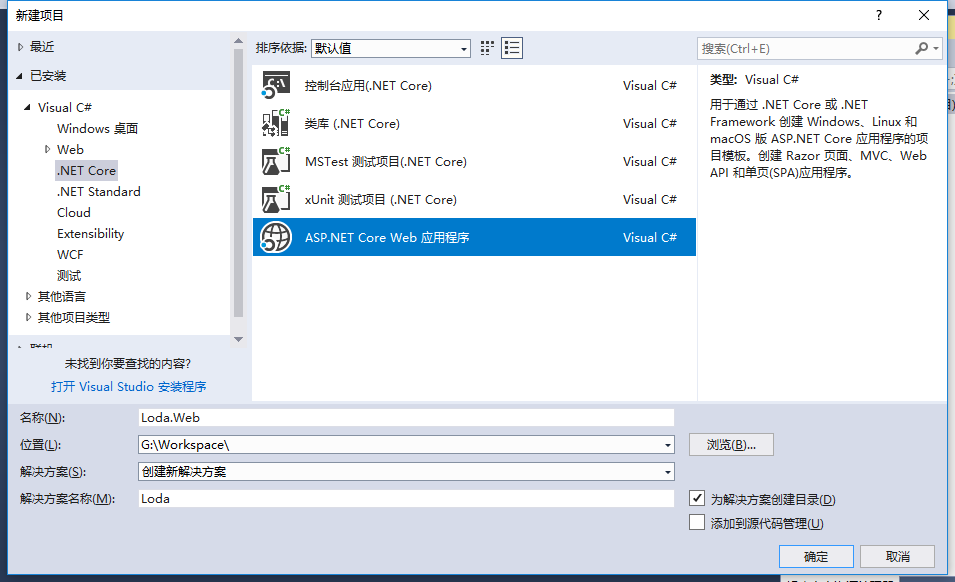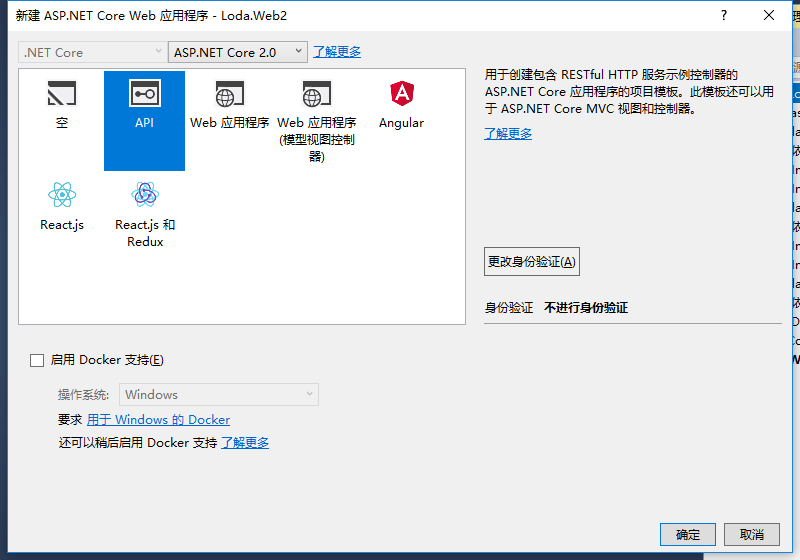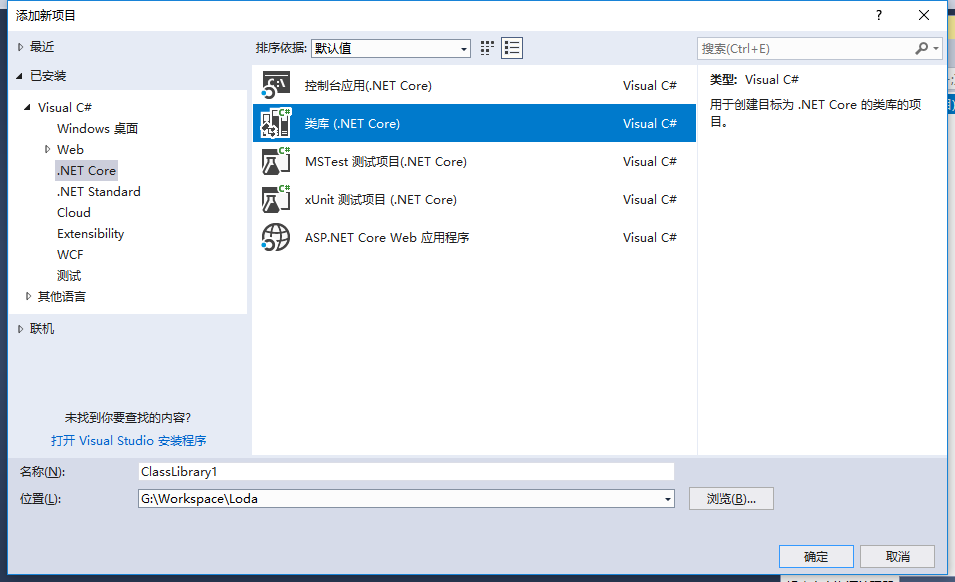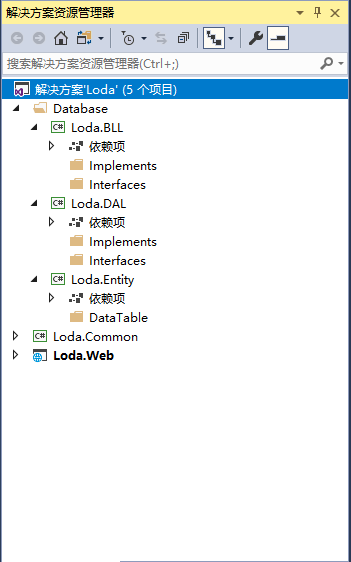概述
本文章描述如何搭建 ASP.NET Core 2.0 WebAPI 依赖注入三层架构,为什么要加入依赖,并不是为了提供程序性能,而是为了项目间解耦,项目之间能够更加独立。
步骤
1. 新建解决方案,添加一个ASP.NET Core WebApi应用


2. 添加四个.Net Core类库:Entity、BLL、DAL、Common
3. 按照以下截图进行解决方案布局

4. 添加DAL层文件
- 在 DAL -> Interfaces 文件夹下,添加接口 IDalService.cs 。这里的数据库上下文依赖注入是为目录作准备的,先添加上。

public interface IDalService<T> where T : class, new() { /// <summary> /// 新增实体 /// </summary> /// <param name="entity">实体</param> /// <returns></returns> T AddEntity(T entity); /// <summary> /// 获取集合 /// </summary> /// <param name="where">linq语句</param> /// <returns></returns> IQueryable<T> GetEntities(Expression<Func<T, bool>> where); /// <summary> /// 保存数据 /// </summary> /// <returns></returns> int SaveChanges(); }
- 在 Dal -> Implements 文件夹下,添加基类 DalService.cs。

public class DalService<T> : IDisposable, IDalService<T> where T : class, new() { private readonly MyContext _context; /// <summary> /// 获得数据库上下文 /// </summary> /// <param name="context">依赖注入的数据库上下文</param> public DalService(MyContext context) { _context = context; } public T AddEntity(T entity) { _context.Set<T>().Add(entity); return entity; } public IQueryable<T> GetEntities(Expression<Func<T, bool>> where) { return _context.Set<T>().Where(where); } public int SaveChanges() { return _context.SaveChanges(); } public void Dispose() { _context.Dispose(); } }
注意,这里只是简单的三个方法:添加、查找、保存数据库,这三个已经足够做演示,如有需要,请另外添加,如删除、更新等。
- 在 Entity 下添加数据库上下文 MyContext.cs

public class MyContext : DbContext { public MyContext() : base() { } public MyContext(DbContextOptions<MyContext> options) : base(options) { } override protected void OnConfiguring(DbContextOptionsBuilder optionsBuilder) { base.OnConfiguring(optionsBuilder); } }
5. 添加BLL层文件
- 在 BLL -> Interfaces 文件夹下,添加接口 IBllService.cs

public interface IBllService<T> where T : class, new() { T AddEntity(T entity, bool isSave); IQueryable<T> GetEntities(Expression<Func<T, bool>> where); int SaveChanges(); }
- 在 BLL -> Implements 文件夹下,添加基类 BllService.cs

/// <summary> /// 数据逻辑层:BLL /// </summary> /// <typeparam name="T"></typeparam> public class BllService<T> : IBllService<T> where T : class, new() { /// <summary> /// 数据库服务 /// </summary> protected IDalService<T> _dal; public BllService(IDalService<T> dal) { _dal = dal; } public T AddEntity(T entity, bool isSave) { entity = _dal.AddEntity(entity); if (isSave) { if (SaveChanges() > 0) return null; } return entity; } public IQueryable<T> GetEntities(Expression<Func<T, bool>> where) { return _dal.GetEntities(where); } public int SaveChanges() { return _dal.SaveChanges(); } }
6. 最后,在 Startup.cs 中,添加依赖映射。

public void ConfigureServices(IServiceCollection services) { DIRegister(services); services.AddMvc(); } // 配置依赖注入映射关系 public void DIRegister(IServiceCollection services) { services.AddTransient(typeof(IDalService<>), typeof(DalService<>)); }
所有步骤完成后,解决方案目录如下

到此为止,三层架构已经全部完成,是不是觉得很简单呢。下一章,我们将基于这个三层框架,使用MySQL数据库,进行基于EF Core的DbFirst开发。
